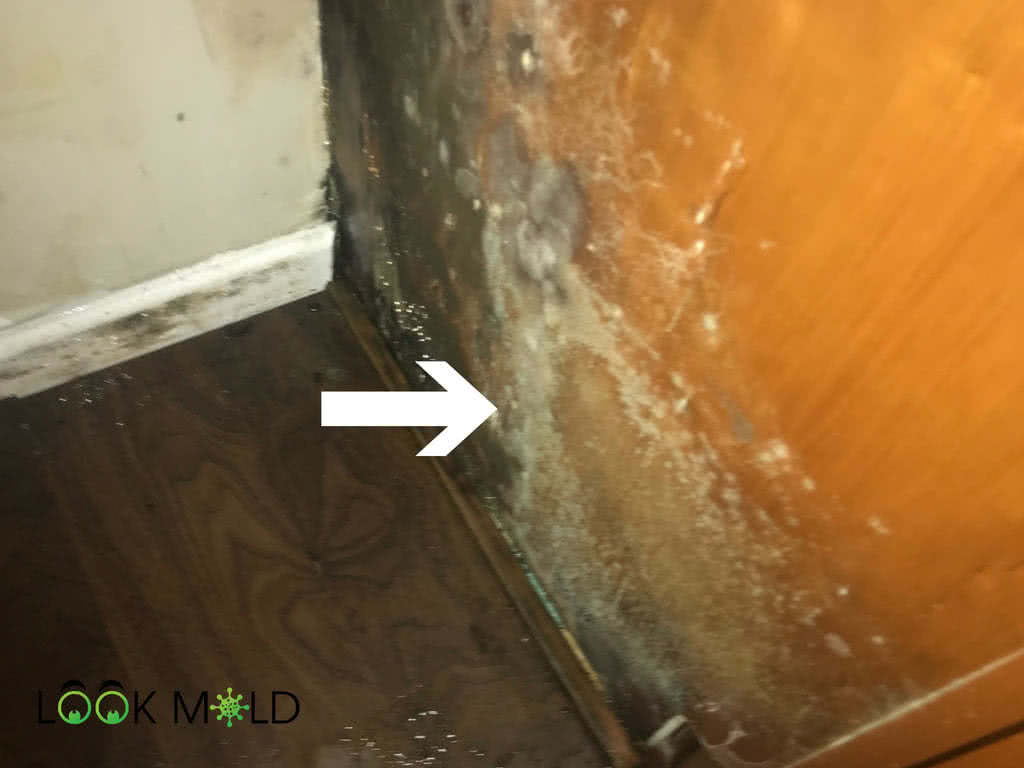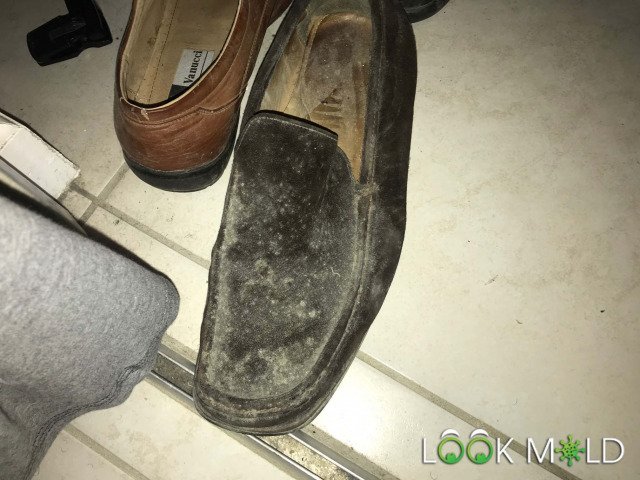Professional Mold Remediation Services
Don't Let Toxic Mold Put Your Family's Health at Risk
Stop mold damage before it spreads. Call now for a free, no-obligation estimate from a local remediation expert.
Free Estimate · Zero Obligation · Available 24/7
White Mold: Dangers, Identification & Safe Removal (2025)
If you’ve spotted a white, fuzzy growth on walls, furniture, or basement framing, you’re likely dealing with white mold.
It might look harmless at first—but this sneaky fungus can damage materials and trigger health symptoms if ignored.
As a licensed mold assessor, I’ve inspected hundreds of homes with white mold infestations. The truth is, white mold can be just as serious as black mold when it’s allowed to spread.
“All molds have the potential to cause health effects,” notes the EPA.
They can produce allergens, irritants, and sometimes even mycotoxins.
EPA – A Brief Guide to Mold, Moisture, and Your Home
What Is White Mold?
“White mold” isn’t a single species—it’s a visual description for molds that appear white, light gray, or pale green during early growth. Common species include:
- Cladosporium
- Aspergillus
- Penicillium
White mold thrives in cool, damp conditions, feeding on organic materials such as:
- Wood framing, joists, and studs
- Drywall and ceiling tiles
- Carpet backing and furniture
- Books, paper, and cardboard boxes
- Clothing, shoes, and upholstery
- Soil and even live houseplants
The CDC confirms mold spores are present year-round, indoors and outdoors.
CDC – Mold and Health
What White Mold Looks Like
White mold can appear powdery, cotton-like, or fuzzy, depending on the surface. Many homeowners mistake it for dust or salt buildup (efflorescence).
| Location | Typical Appearance | Often Mistaken For |
|---|---|---|
| Basement wood beams | Fuzzy white patches | Sawdust or lint |
| Painted drywall | Thin white veils or spots | Spider webs |
| Concrete walls | Chalky residue | Efflorescence |
| Clothing or shoes | Soft, fuzzy coating | Lint or detergent film |
Quick test:
Spray a little water on the surface.
- If it dissolves, it’s likely efflorescence (salt).
- If it stays put, it’s mold.

White Mold vs. Black Mold
When people hear “toxic mold,” they usually picture black mold (Stachybotrys chartarum). But white mold can cause similar structural and health problems.
| Feature | White Mold | Black Mold |
|---|---|---|
| Color | White to light gray | Dark green to black |
| Texture | Powdery or fuzzy | Slimy or sticky |
| Surfaces | Wood, concrete, fabric | Wet drywall, insulation |
| Health Risk | Moderate to high | High (produces mycotoxins) |
Learn more: Black Mold Identification & Removal Guide
Is White Mold Dangerous?
Yes. White mold can trigger allergic reactions and respiratory symptoms, especially in people with asthma, compromised immunity, or mold sensitivities.
Common symptoms include:
- Persistent coughing or sneezing
- Nasal congestion or sinus headaches
- Skin or eye irritation
- Fatigue or “brain fog”
- Worsening of asthma symptoms
OSHA warns that “mold exposure severity depends on the type, concentration, and duration of exposure.”
OSHA – Mold Safety and Health Topics
If you experience these symptoms that improve when you leave the building, it’s time for a professional inspection.
How to Remove White Mold Safely
If the affected area is less than 10 square feet and on a non-porous surface, you can attempt cleanup yourself. For larger infestations, call a certified remediation company.
Safety Gear
- N95 respirator
- Non-porous gloves
- Goggles
- Long sleeves and pants
Cleaning Solutions
- White vinegar (undiluted) – kills most mold species naturally
- Borax (1 cup per gallon of warm water) – leaves a protective residue
- EPA-registered products – Concrobium, Vital Oxide, or Benefect
Cleaning Steps
- Ventilate the area and seal off nearby rooms.
- Apply cleaner and let sit for 10 minutes.
- Scrub with a soft brush or sponge.
- Rinse and dry thoroughly with a fan or dehumidifier.
- Dispose of cleaning materials in sealed plastic bags.
If mold returns quickly or is embedded in drywall, insulation, or carpet padding, it’s time for professional remediation.
What Kills White Mold Effectively?
| Product | Works Best On | Advantages |
|---|---|---|
| Vinegar | Tile, sealed wood | Non-toxic, cheap |
| Borax | Wood framing, concrete | Prevents regrowth |
| Vital Oxide / Concrobium | Most household surfaces | EPA-registered, kills spores |
Preventing White Mold Growth
Mold prevention comes down to moisture management.
Keep humidity under 60%
Use a hygrometer to monitor levels and a dehumidifier in basements, bathrooms, and laundry rooms.
Fix water issues fast
Leaks, condensation, or flooding are the top causes of indoor mold.
Improve ventilation
Run exhaust fans in kitchens and bathrooms, and open closet doors periodically to circulate air.
Dry materials quickly
Anything wet for more than 48 hours can develop mold growth.
“Controlling moisture is the key to mold control.”
— EPA Mold Course, Chapter 1
White Mold on Clothes & Fabric

White mold thrives on organic fabrics like cotton, wool, and linen. It’s common after floods or prolonged humidity.
| Fabric | Cleaning Method | Notes |
|---|---|---|
| Cotton / linen | Hot water + 1 cup vinegar or borax | Air-dry in sunlight |
| Wool / silk | Professional dry cleaning | Inform the cleaner about mold |
| Synthetic blends | Warm cycle + borax | Avoid bleach on colored fabrics |
| Flood-soaked items | Discard | May contain harmful bacteria |
Hidden Places White Mold Grows
- Behind drywall or insulation
- On joists and subfloors in crawlspaces
- Inside HVAC ducts and vent registers
- Under carpets and rugs
- On stored books, boxes, or furniture in humid areas
If you smell mustiness but don’t see visible mold, request a professional air or surface test.
When to Call a Professional
Call a licensed mold remediation specialist if:
- The affected area is larger than 10 square feet
- Mold keeps returning despite cleaning
- It’s growing inside walls or HVAC ducts
- You or a family member have ongoing symptoms
Certified professionals follow IICRC S520 standards for safe removal, containment, and clearance testing.
👉 Find a certified mold remediation contractor near you
Key Takeaways
- White mold is not harmless. It can trigger allergies and damage property.
- Control humidity. Keep indoor RH below 60%.
- Clean safely. Use vinegar, borax, or EPA-approved cleaners.
- Replace porous materials if mold has penetrated deeply.
- Call professionals for large or recurring infestations.
FAQs About White Mold
What exactly is white mold?
White mold refers to several light-colored fungal species that grow in damp environments on materials like wood, drywall, and fabric.
Is white mold dangerous?
Yes. It can cause respiratory irritation and structural damage if ignored.
How do I tell the difference between white mold and efflorescence?
Spray water on it. Efflorescence dissolves—white mold does not and often feels fuzzy.
Can I clean white mold myself?
Yes, if it’s on non-porous surfaces and under 10 square feet. Wear protection and ventilate the area.
How can I stop white mold from coming back?
Keep humidity below 60%, dry leaks immediately, and use a dehumidifier in humid areas.
Explore Related Topics:
Notice an update we should make?
We strive for accuracy. Contact us here if you see incorrect or outdated info on this page.
